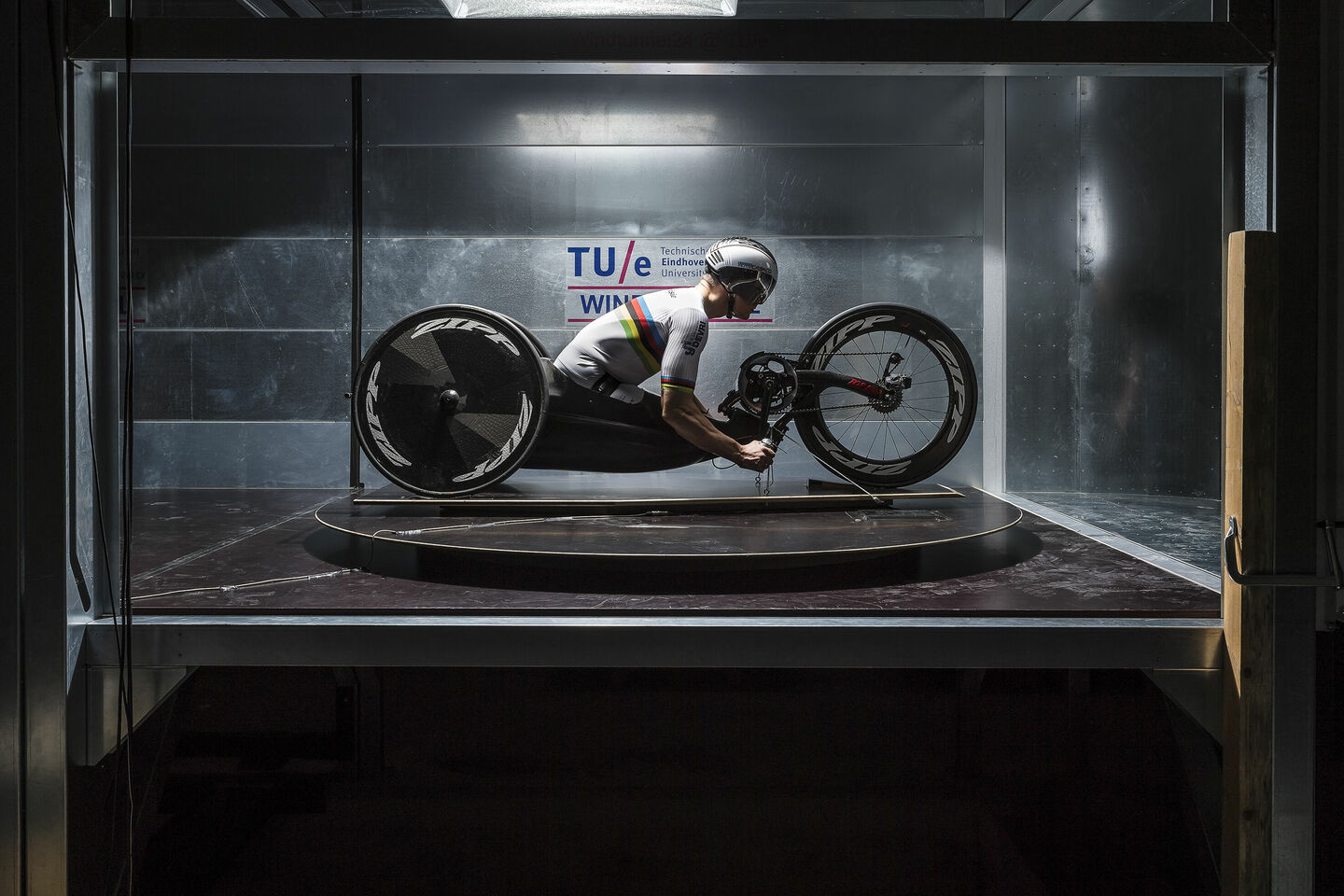
Putting wind to work
Cyclists, wind turbines, apartment buildings, oil tankers and solar parks: their aerodynamic properties can be tested in the new wind tunnel belonging to the Department of the Built Environment. Cyclists and skaters in particular – and in their wake camera crews - are standing in line to use this unique atmospheric boundary layer tunnel, the brainchild of aerodynamics expert and cycling enthusiast Bert Blocken.
Scale models of buildings, model cyclists, construction plans for wind tunnels and related paraphernalia fill Bert Blocken's office. Lying on the floor, next to an abandoned laptop, is a box full of miniature cyclists, a leftover from the official opening of 'his' wind tunnel on December 14th. He is typically busy, this congenial man from Dutch-speaking Belgium, and in recent months he has been busier than ever. Even if only with all the media attention he's had to cope with surrounding the completion of the new wind tunnel. “I'm now hopelessly behind with my regular work,” says the Professor of Building Physics. “But of course I am very glad that the tunnel has already generated so much positive publicity.”
The gigantic ring-shaped wind tunnel, with a measuring section no less than 27 meters long, is hidden away in an equally new building, which was erected last year on the south-eastern side of the TU/e campus: Ventur. This entrepreneurial sounding name carries within it not only the Latin word for wind, ventus, but also Venturi, the name-giver of the Venturi effect, which describes the increase in fluid velocity as a fluid flows through a constriction.
The colossus, which is known as an atmospheric boundary layer tunnel, simulates the air flow close to the earth's surface, and can be used to measure the effect of wind on relatively large-scale models of (almost) stationary objects, such as buildings, ships, and drilling platforms. The unique length of the test section and the cross section of three by two meters make the tunnel also ideal for measuring, say, models of rows of wind turbines or, indeed, a train of actual cyclists.
Publicity
The cycling world in particular has taken note of the tunnel. At the end of November, even before the official opening, a delegation of the Dutch professional cycling team Lotto-Jumbo paid a visit to have the first measurements taken. A couple of days later a report on this visit made the national evening news, broadcast by Dutch station NOS. Similarly, the science program De Kennis van Nu travelled to Eindhoven to film, and broadcaster MAX produced an item for its program Hallo Nederland. In addition, Blocken found himself speaking to various radio stations and, of course, the written media, including national newspaper De Volkskrant.
“While I enjoy talking to the media, I do find it stressful", says Blocken. "Firstly, of course, I have to make sure I'm saying everything correctly, and then I hold my breath wondering whether everything will be correctly communicated. By way of example, initially it was stated on the De Kennis van Nu website that ours is the largest wind tunnel in the Netherlands, while it's only the longest of its type. But in general I've only had good experiences with the media. You only have to mail the De Kennis van Nu about an error like this and it's corrected within a couple of minutes.”
Cycling
For many reasons, cycling, wind tunnels and Blocken make happy bedfellows. Firstly, this man from Flanders is a keen cycling enthusiast, and was a creditable amateur rider in his younger years. In fact, his studies of the aerodynamics of cyclists, both in the wind tunnel and with computer simulations, were something he started as a hobby, aside from his professional research.
In recent years, it has been his findings concerning the sport of cycling in particular that have enjoyed sustained media interest. The professor has responded to this cleverly, by publishing his latest results – about the descent posture of top cyclist Froome, the effect of support vehicles on time trials, and the fact that cyclists benefit aerodynamically from having a rider in their slipstream, for example – right in the run-up to the major cycling events.
Consequently, he is now known to the media – he has already appeared on Flemish television as an evening guest during the Tour de France, and in the recent Dutch National Science Quiz one of the questions was even of Blocken's making: a motorcycle travelling alongside a cyclist has an inhibitory effect on the cyclist, was the right answer.
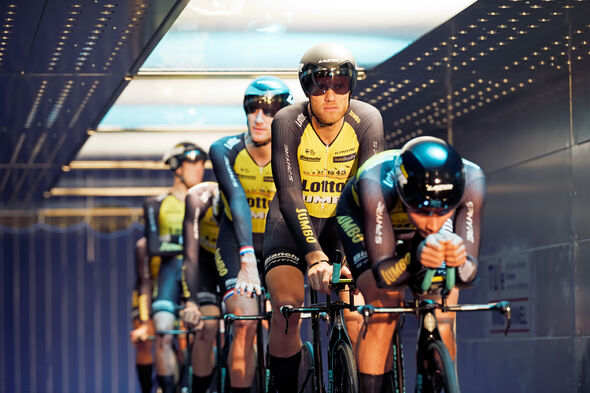
Precision
Today Blocken's cycling research has long since ceased to be a hobby. What's more, sports teams are a significant source of potential income for the new wind tunnel; the investment of 1.35 million euros (including measuring equipment, but excluding the Ventur building) must be earned back by making the tunnel available to contract research for some of the time. “The large teams, such as Lotto-Jumbo, have a considerable budget for research,” says Blocken. “There's nothing frivolous about this: every percentage point of air resistance gained or lost can make the difference between winning and losing. This level of precision is something we can now offer with this tunnel; we are able to measure the wind force on a paperclip.” At this level, he says, we are talking about forces less than one hundredth of a Newton, similar to a gram on weighing scales.
“This level of accuracy isn't required when you are researching the wind force on buildings. This is because generous safety margins are incorporated into their design. There is no point striving for an accuracy of a single percent. But in sport, by contrast, that precision is very much needed.”
Skating
Just how seriously research into aerodynamics and the opportunities afforded by the Eindhoven boundary layer tunnel are taken in the sporting world is evident from the fact that the skating arm of Lotto-Jumbo (the team including Sven Kramer and Kjeld Nuis) has urged Blocken to allow them to carry out tests with moving skaters in the tunnel before the Winter Olympics. “I had to disappoint them; we aren't ready for that unfortunately. Before any useful conclusions can be drawn, we have to install cameras we can use to track the skaters' movements based on markers on their suits. But it is certainly something I see us doing in future.” The team has its own synthetic floor that can be placed in the tunnel, explains Blocken. “But real ice is probably a lot more realistic; even that should be possible in our tunnel,” he says with a grin.
Handcycling
One athlete who was allowed to use the wind tunnel before its official opening is the Dutch world champion handcyclist Tim de Vries. As part of his preparations for the Paralympic Games of 2020 in Tokyo, he is exposed – in early December, under the watchful eyes of the cameras of broadcaster MAX and sports photographer Paul Raats – to wind speeds of around 40 kilometers an hour.
De Vries seems to be in his element: enveloped in stillness, bent double over the handlebars of his handbike, his forehead almost against the front wheel, chin nearly grazing the chain. A noise like a aircraft taking off swells: “11.5,” calls the chief technician Jan Diepens at the control unit. That will be meters per second; the unit used to express the wind speed in the tunnel. Bert Blocken sits at an improvised desk, with a computer, laptop and a sort of mixing desk. He uses a microphone to communicate with De Vries in the tunnel. He is there testing various helmets, suits with long and short sleeves, wheels and postures.
Hopping on one leg – he lost his left leg after a trampoline accident – De Vries nonetheless climbs in and out of the measuring space with relative ease using a step ladder. As he changes his clothes, it is evident that he has the body of a gymnast rather than a cyclist; his upper body is muscular.
With the tests completed, De Vries says he's enjoying all the media attention. “It's not something we are used to in handcycling. But what is really great is that I get to sit here in the tunnel next to the professor, and that the feedback is instant. During the test I could also see my air resistance on a screen, so I could adapt my posture immediately.”
For the next season he knows which clothing, helmet and wheels he should choose, he says, but Blocken has already promised to let him return for another session. “Then we could take measurements using bicycle rollers, so that I can actually cycle. That will of course make it more realistic. It's obvious that Bert has a deep understanding of cycling, that he's got a lot of personal experience. I've also had some tips for the design of a new handbike. It's great that they are so open to everything, and are equally keen to have a handcyclist in the wind tunnel.”
Four commercially available fans generate wind speeds in the tunnel of up to 33 meters per second, comparable to wind force 12, and use a total of some 240 kilowatts to do so. In fact, wind tunnel is a kind of ring-shaped accelerator, in which fans give the air a boost with every circuit. This makes it much more energy-efficient than a linear tunnel.
Before the accelerated air enters the measuring section, five grids, each more finely meshed than the last, create a wind profile that is as uniform as possible. These filter, as it were, currents from the air flow, resulting in a turbulence of less than 0.2%. Owing to this, the first part of the test section can also be used as an aeronautical wind tunnel.
Besides being used to measure the wind force on scale models, the tunnel is also used to visualize air flow. This is achieved by adding smoke and tracking the path of the smoke particles. To enable this, both the side wall and ceiling of the measuring section are glazed. The base of the various modules can also be replaced with a glass panel; this enables measurements with laser light to be taken from below.
History
An entirely new research facility big enough to require its own building does not appear overnight. Bert Blocken had plans for an atmospheric boundary layer tunnel for almost ten years. He joined TU/e in 2006 as an assistant professor, he explains, originally with the aim of returning to his alma mater in Leuven as soon as a suitable position became available. “But I liked being here far more than I had expected, and after a few years I was promoted to associate professor. When I decided to stay here, I started to think about the Department of the Built Environment having its own atmospheric boundary layer tunnel, supplementary to the existing aeronautical tunnel belonging to Applied Physics in the Cascade building.”
There were then only three wind tunnels of this type in the Netherlands: one belonging to the engineering consultancy Peutz in Molenhoek near Nijmegen, one belonging to DNW (German-Dutch Wind Tunnels) in the North-east Polder, and one from TNO in Apeldoorn. “Compare that with the number of aeronautical wind tunnels, in which a uniform wind profile is generated. They are much more numerous. To illustrate this: at Belgium's Von Karman Institute they have nearly thirty wind tunnels, only one of which is an atmospheric boundary layer tunnel.”
The part of the TNO wind tunnel would end up on the scrap heap, so I asked I could send three trucks
Scrap heap
TNO's tunnel was already old, explains the professor, and what's more was not a closed loop. “As such, air was sucked in from outside, making it impossible to regulate the temperature and humidity.” After a failed attempt undertaken with academic partners, including TU/e, to secure an NWO grant for a new boundary layer tunnel, TNO decided, says Blocken, to dismantle the tunnel in Apeldoorn. “At that point I called TNO to ask what they planned to do with the parts. They'll be going on the scrap heap, they said. I then asked if I could send along three trucks to pick up the stuff, and they agreed.”
So it happened that TU/e was suddenly in possession of a dismantled wind tunnel, including measuring equipment and accessories. “Some parts were still very useable, including accurate scales for measuring forces.” Of course, it would have been a waste not to use them. “Just about then, the Department of the Built Environment had been instructed by the Executive Board to invest more energy in research,” reports Blocken. “Then and there everything fell into place. The loss of the facility in Apeldoorn created a significant need for a tunnel of this type in the Netherlands and we already had all the components.” To top it all off, the Flemish professor delivered TU/e's first Massive Open Online Course (MOOC) in 2014, on aerodynamics. “This attracted many more participants, no fewer than 24,000, than expected. For both the department and the university this was proof that my specialist field is ideal if you are looking to promote yourself.”
Location
After receiving the green light from the Executive Board and the departmental board, the first hurdle was overcome. But others would follow. The planned location in the Vertigo building, right next to the premises of the Department of the Built Environment, proved inopportune in view of the university's unexpected rapid growth. “That was earmarked for parking spaces, perhaps even a multistory car park. Or at some point in the future an additional lecture hall. We briefly considered the feasibility of incorporating the tunnel in a multistory car park, but came to the conclusion that the integration would be too costly and the vibrations caused by the cars would create too much measurement disturbance.”
It would have to be sited on the edge of the campus, then, in a simple steel shed if it were up to Blocken. But that was vetoed by the TU/e Quality Team. Housing the wind tunnel in a building like that would diminish the allure of the campus. “That was understandable, after all the campus is a showpiece for the university, but it did mean that the building would be well over budget. So much so that there was a bit of uncertainty as to whether it would go ahead.” Abandoning the plan would have been very hard to stomach, all the more so in view of the very competitive price agreed for the wind tunnel.
“We went into partnership with Windtunnel24, a family-run company in north-eastern Germany. They had no experience of tunnels of this size, and were keen to prove they could produce them. This prompted them to make us a very affordable offer – competitors were asking for many times the sum involved. It was a risk, but it worked out well; they are a friendly group of people and their work has been excellent. And for them, of course, it has been ideal that the tunnel has generated so much media attention. We have sent all the TV pictures to them so that they can show them off.”
Solar parks
Now that the first storm of publicity has subsided, it is time for Blocken and his colleagues to cross the t's and dot the i's. To install and test new measuring equipment, and take measurements to check their own computer models. In addition, they will be welcoming commercial parties, to inform them about the full scope of the atmospheric boundary layer tunnel's capabilities. And they are numerous, the expert is keen to stress: “People often underestimate the range of testing that goes on in wind tunnels. It's not only wind turbines and cyclists. We can also study air pollution, for example in connection with the intake ducts of ventilation systems, and we do a great deal of research into wind nuisance around buildings, such as the many new high rises that are planned for Eindhoven. And perhaps it will come as a surprise to learn that the testing of solar parks for their vulnerability to storm damage is a significant field within aerodynamics. Being so vast, those fields full of panels can generate high wind speeds, and turbulence generates a suction effect. Aerodynamics is important not only to wind energy but also to solar energy!”
Main photo | Paul Raats

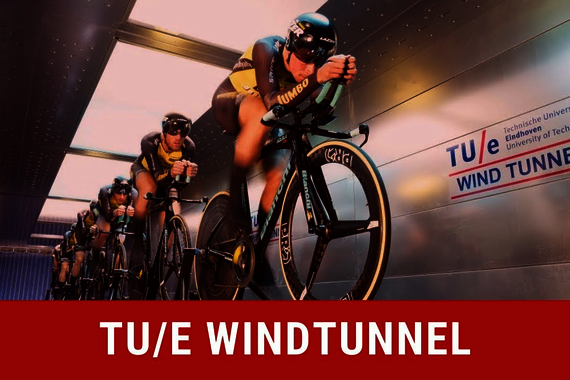
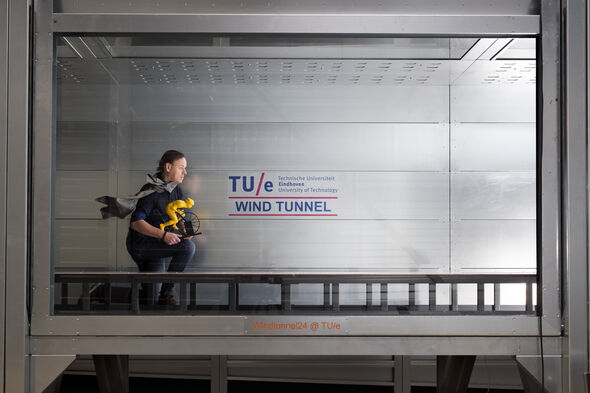
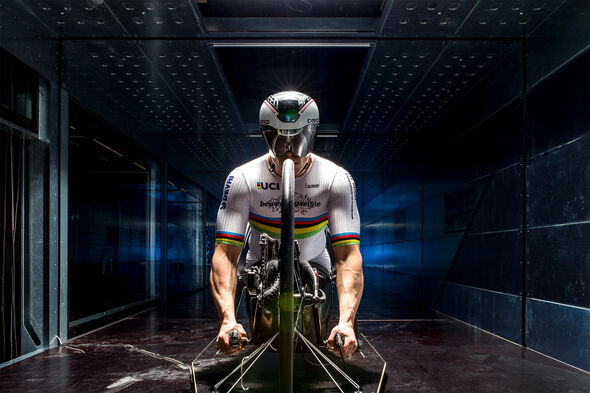
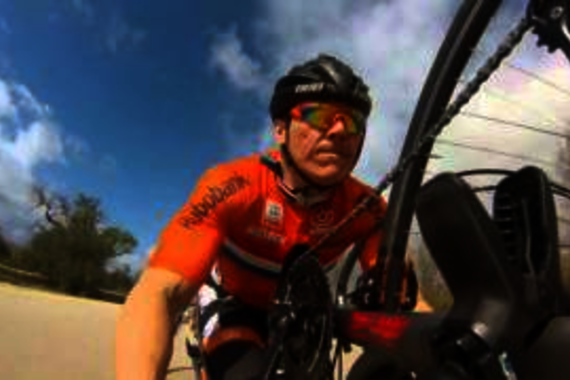
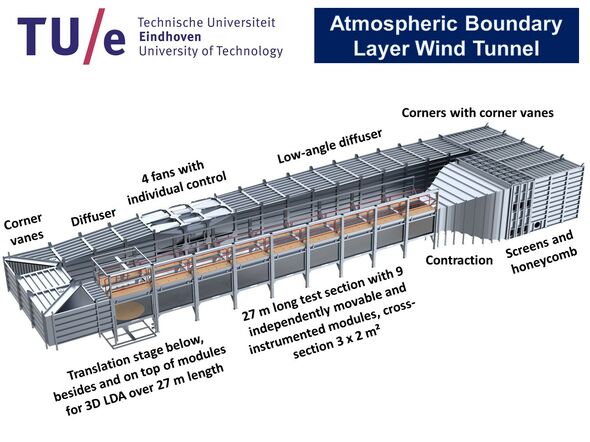
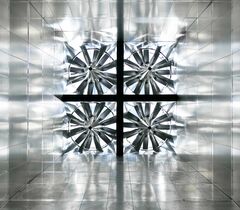
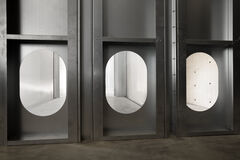
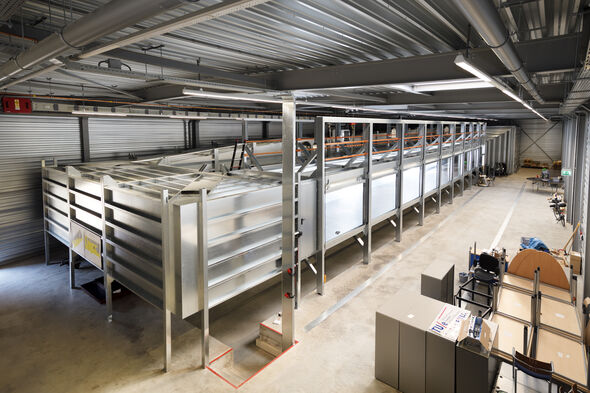
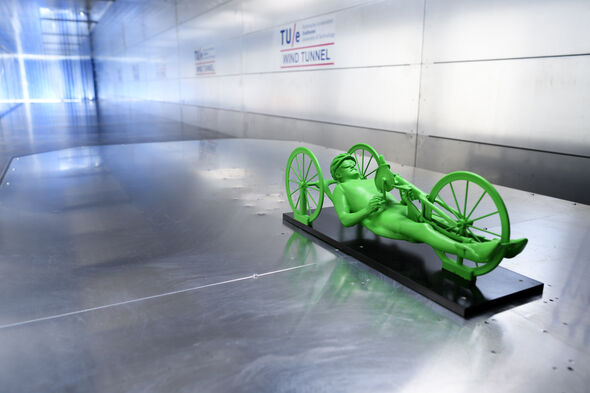
Discussion